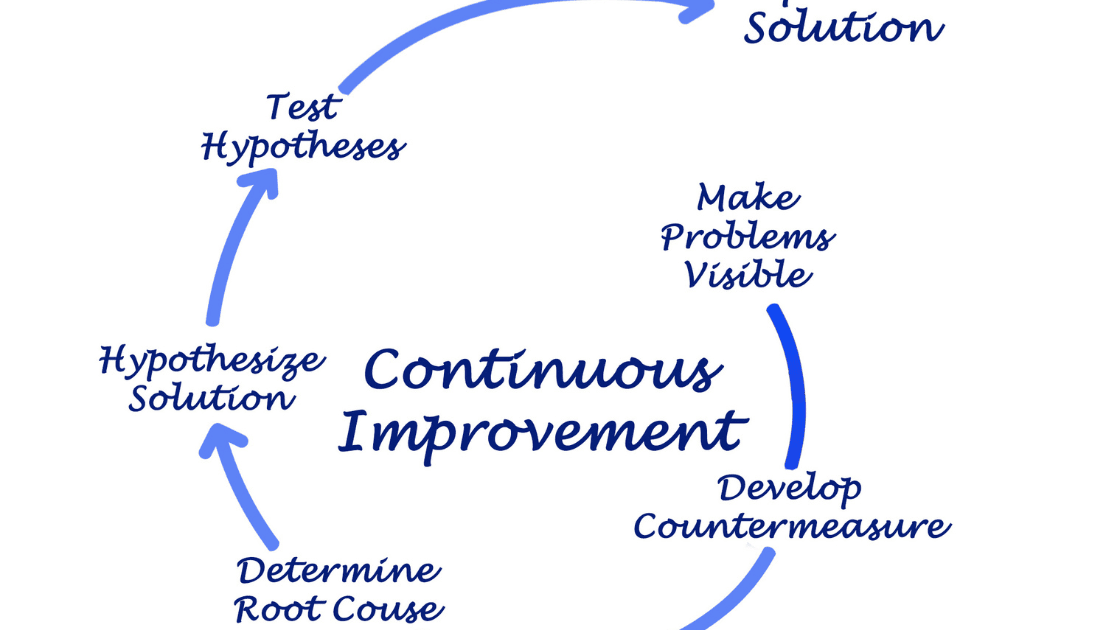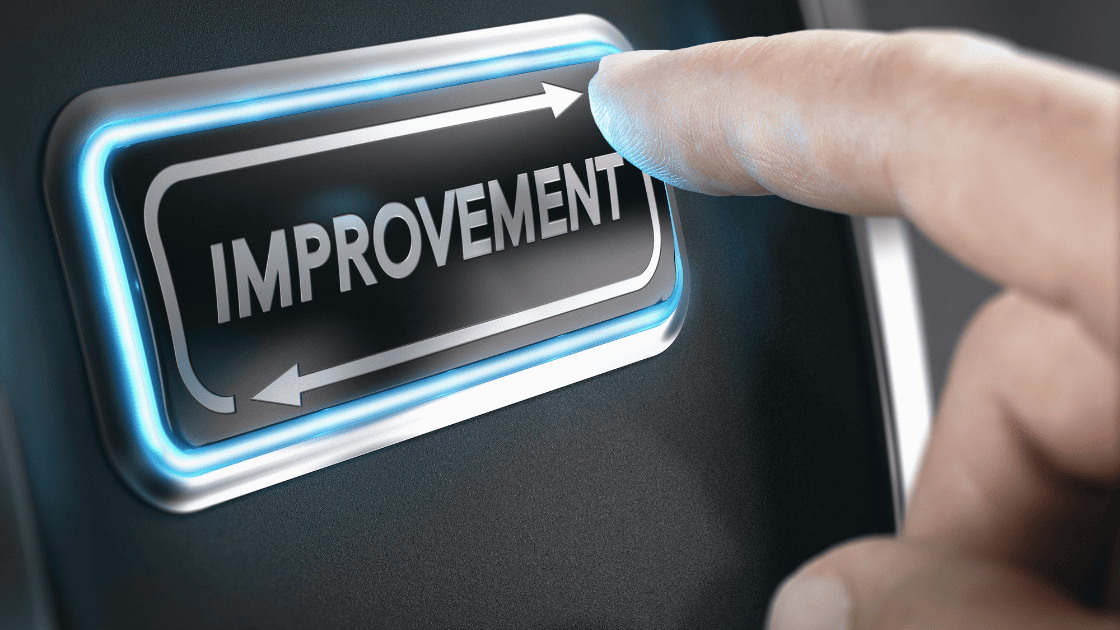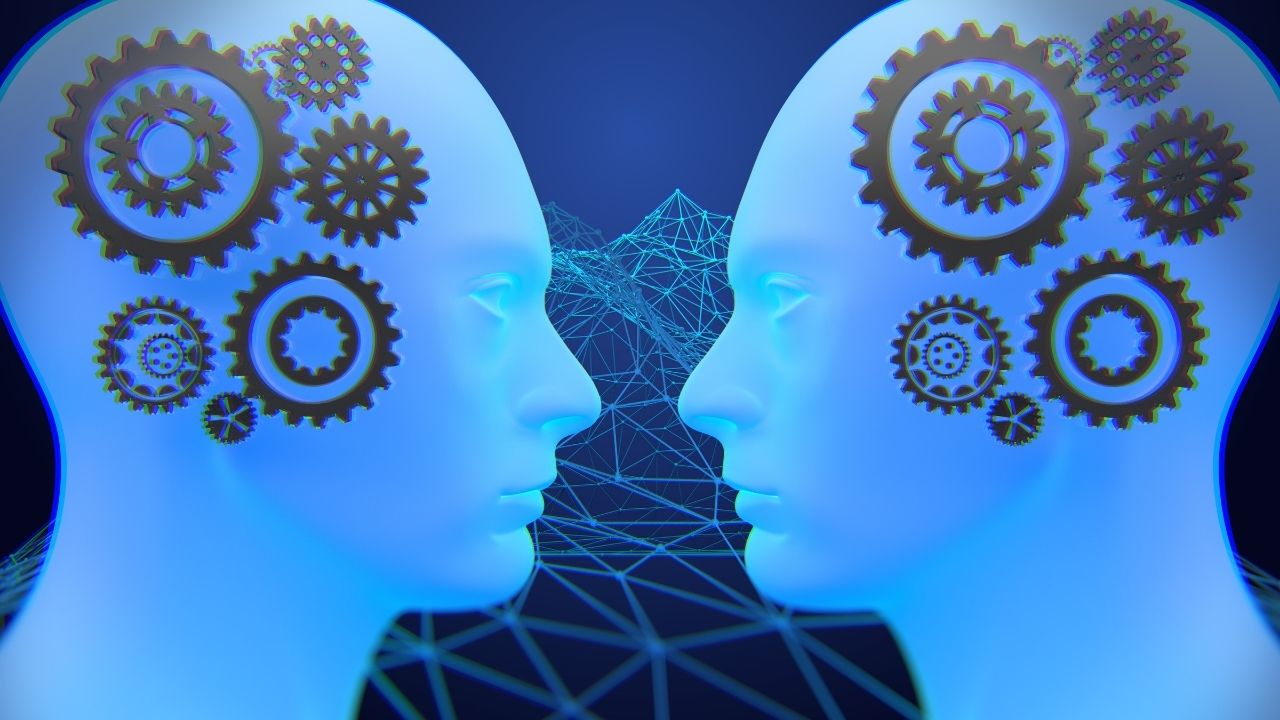AI Tools Used In Combination With Kaizen
Introduction
Table of Contents
As businesses look to become more efficient and leaner, many of them are taking advantage of the power of Artificial Intelligence (AI) tools in combination with Kaizen. Kaizen is a Japanese strategy that aims at improving business productivity through repeating small but continuous improvement initiatives.
Recently, AI has boosted its functionalities so that it can now effectively support the Kaizen process by automating data collection and analysis, identifying improvement opportunities from data insights, streamlining communication & collaboration as well as boosting organization’s efficiency and productivity.
In this blog post, we’ll explore how AI tools enhance the kaizen process as well as best practices for successful implementations of it in an organization.
Key Takeaways
- AI tools like machine learning algorithms, natural language processing, predictive analytics and chatbots enhance the Kaizen process by automating data collection and analysis, uncovering improvement opportunities from data insights, streamlining communication & collaboration within teams, improving efficiency and productivity as well as boosting customer experience.
- Implementing Kaizen can improve processes through innovative problem solving techniques while offering continual learning opportunities to all team members allowing organizations to stay ahead of market trends ultimately leading to higher customer satisfaction levels as well as real cost savings for profitability gains over time.
- Businesses leveraging AI powered solutions have a competitive advantage with more accurate forecasts on upcoming demand or targeted promotions based on user preferences giving them powerful insights into consumer behaviour leading to effective strategies for sales initiatives and improved quality products through issue resolution & process automation at minimal costs.
Understanding Kaizen And Its Benefits In Business
Kaizen is a business approach used to create continuous improvement. It involves making small, incremental changes over time and allows businesses to reap significant positive outcomes in the long run.
This approach focuses on the concept of “kaizen-ism” – which means “change for the better” – and stresses on having an attitude that emphasizes constant improvement.

The main benefits of implementing Kaizen include improved processes through innovative problem solving techniques as well as increased efficiency due to employees collaborating more closely with each other both inside and outside organizational boundaries.
Additionally, continual learning opportunities are also provided by creating a culture of employee engagement focused on ‘kaizen-ism’ – one that fosters creative ideas from all individuals within an organization rather than just relying solely on management-level decisions alone.
Overview Of AI Tools And Their Applications
From Machine Learning Algorithms to Predictive Analytics and Natural Language Processing, there are many AI tools available to help drive the Kaizen process forward.
Machine Learning Algorithms For Data Analysis
Data analysis is a cornerstone of effective and efficient business operations, with the ability to inform decision-making and uncover new strategies. For Kaizen projects which have an emphasis on continuous improvement, data is invaluable in helping to create processes that are beneficial to both employees and customers.
Fortunately, modern businesses now have access to powerful machine learning algorithms – simple programs that learn by analyzing large amounts of data – which can analyze patterns within information sets much faster than traditional methods.
Machine learning algorithms take existing datasets and search for connections between them or identify trends encoded within individual pieces of the data. The output from these scans results in insights into current processes or hints as to what could be done differently for better performance or greater efficiency; this kind of actionable intelligence can be extremely useful when used together with Kaizen practices since it allows teams working on improvements to make informed decisions about how best they should proceed.
Natural Language Processing For Customer Feedback Analysis
NLP, or Natural Language Processing, is a form of AI that enables machines to understand and interact with human language. This technology can provide businesses valuable insights by automatically analyzing customer feedback written in any natural language—such as English, French, Spanish—and extracting relevant customer needs and expectations.
Based on this analysis, businesses can then take proactive measures to quickly address issues raised by customers and improve satisfaction levels across their base. NLP also allows companies to uncover recurring issues from customer responses which may point to underlying problems such as buggy software or unclear processes – giving them the opportunity to fix these before they start impacting customer experience negatively.
Examples such as GPT-3 developed by OpenAI are widely popular because of its AI capabilities combined with statistics for predicting the next word in a sentence when fed text data.
Predictive Analytics For Forecasting And Decision-Making
Predictive analytics are a powerful tool used for forecasting and decision-making. Powered by machine learning algorithms, this technique leverages data to develop appropriate statistical models that identify patterns in the data and help to predict future outcomes.
This way, businesses can anticipate trends and shifts in customer behaviour across markets and industries so they can be more proactive with their decisions.When used in combination with Kaizen, predictive analytics helps to streamline processes, enhance efficiency, improve productivity and drive operational excellence.
Predictive analytics provides valuable insights from the vast amounts of data such as historical sales transactions or customer reviews which allow businesses to significantly reduce risks associated with decision-making as well as time associated with it.

For example, utilizing predictive analytics businesses can make accurate forecasts about upcoming demand for products allowing them better manage supply chains ensuring faster delivery timescales while minimizing costs.
Chatbots For Customer Service And Support
Chatbots are AI-based systems that provide automated conversations with customers online. They can increase customer service response times, reduce the cost of customer support, and simulate human interaction for a more personalized experience.
Chatbots are used in different business tasks such as providing responses to FAQs or helping customers find products quickly.
Marketers use chatbot technology to personalize customer experiences by delivering customized product recommendations or targeted promotions based on user preferences.
IT teams often implement self-service chatbot solutions for faster issue resolution and faster process automation. Contact centers also rely on these digital assistants to answer simple faq’s like account information enquiries which free up agents resources so they can focus on more complex tasks quicker helping them meet goals efficiently while delighting their customers at the same time .
How AI Tools Enhance The Kaizen Process
AI tools can be used to automate data collection and analysis, identifying improvement opportunities with data insights, streamline communication and collaboration within teams, and increase efficiency and productivity across the organization.
Automating Data Collection And Analysis
Automating data collection and analysis processes using AI tools can significantly enhance the Kaizen process. AI tools can help businesses collect and analyze large amounts of data in a fraction of time, identify patterns, trends, and correlations among data points, and uncover root-causes behind defects or waste.
Not only does an AI-based approach to data processing lead to efficiencies gained through automation, but also allows for faster decision-making processes. For instance, with an AI powered tool businesses can discover real-time correlations between consumer behaviors and business activities. Furthermore, PwC research suggests that even basic AI-based data extraction techniques can save businesses up to 30-40% of their time by automatically filtering relevant content from mountains of raw and structured datasets.
On top of automating previously manual tasks, the combination of Kaizen with modern AI technologies also presents an opportunity for small businesses to become more agile and competitive in the market. The implementation of these technologies in lean manufacturing for example can improve operational excellence by reducing production costs while at the same time increasing quality control.
Through predictive analytics combined with Kaizen methodologies organizations not only are able to gain faster insights into customer needs but they are also able to make decisions based on them quicker than before. Moreover, using natural language processing technology it is now possible for companies to comprehend customer feedback in just a few minutes instead of manually analyzing customer reviews or surveys.

In addition, adopting chatbots and virtual assistants can provide additional benefits when integrating AI tools with Kaizen such as streamlining communication, enhancing efficiency and productivity, and improving customer experience through introducing 24/7 automated customer service and support capabilities.
Identifying Improvement Opportunities Through Data Insights
Capitalizing on data-driven insights can help identify the areas of a business process that can be improved. This is where AI tools come in—by using machine learning algorithms, natural language processing (NLP) and predictive analytics, businesses are able to gain powerful insights into their structural trends and development processes through data analysis.
Machine Learning Algorithms for Data Analysis: Machine learning technologies enable companies to detect patterns and anomalies in large datasets such as sales statistics or customer feedback surveys. This can yield valuable information about how customers interact with products/services, providing actionable intelligence for optimizing future operations. With the right ML algorithm, companies can uncover hidden indicators that point out improvement possibilities such as streamlining production processes or improving customer journeys.
Natural Language Processing for Customer Feedback Analysis:NLP is an invaluable tool when it comes to analyzing customer reviews or feedback forms efficiently and accurately. By applying sophisticated algorithms to these vast amounts of text data, businesses can gain unique understandings regarding what their current offerings lack compared to the competition’s – allowing them to design more effective product designs moving forward while better understanding consumer sentiment towards existing ones and conduct targeted interventions as necessary.
Predictive Analytics For Forecasting And Decision Making: Using predictive analytics, long-term trends may be identified through intricate forecasting models generated by combing past datasets with modern statistical techniques.. These models allow businesses to develop strategies tailored around complex markets — giving them an edge when making decisions which involve big investments such as market entry strategies or project planning decisions. Uncovering expected returns before committing resources helps minimize risk taken during these pivotal times – allowing firms deploy smarter Kaizen tactics that encompass both short-term successes along with long term investments guarded from potential market downturns .
Streamlining Communication And Collaboration
Communication and collaboration are essential elements of successful kaizen. With the help of AI tools, organizations can streamline communication between stakeholders across departments to identify improvement opportunities and ensure efficient response times for implementation. Some strategies for leveraging AI to optimize communication include:
• Establishing clear objectives at the outset of the project to effectively align output expectations with business goals
• using natural language processing (NLP) algorithms to analyze customer feedback quickly

• Developing chatbots or virtual agents equipped with predictive AI capabilities that are able to understand what customers need and respond in real time
• utilizing voice recognition technologies like Amazon Echo/Alexa or Google Assistants in order handle routine inquiries • Implementing event-driven architectures where changes are automatically notified when they occur
• Automating processes by configuring computer programs that trigger automated alerts whenever new data is generated or anomalies identified
• Integrating big data analytics platforms into existing systems so information flows freely within an organization
By investing in these AI solutions, businesses can reduce manual tasks, cut costs associated delays, enhance team efficiency by building collaborative workflows and ultimately become more agile in their operations.
Enhancing Efficiency And Productivity
AI tools can significantly improve efficiency and productivity when used in combination with the Kaizen process. AI technologies like Machine Learning, Natural Language Processing, Predictive Analytics, and Chatbots enable businesses to automatically collect data more accurately and quickly than manual methods. With access to this accurate data, companies are better equipped to identify areas of improvement that will have the greatest impact on performance.
Data-driven analytics from AI systems helps businesses prioritize tasks more effectively. Automated insights provided by these systems allow managers to detect sluggish elements in their processes faster while identifying opportunities for innovation or cost savings even before they arise – thereby streamlining operations considerably.
AI-based automation can also help with task management by distributing workloads across teams evenly; reducing administrative overhead; and speeding up decision-making processes through real-time updates or interactive dashboards displaying key metrics such as costs incurred or level of activity completed at any given point of time during a project lifecycle. The implementation of AI technology leads to reduced cycle times which eliminates waste due to prolonged lead times between activities thus resulting in higher productivity levels that enhance customer experience and add long term value for businesses adopting kaizen principles.

Case Studies Of Successful Implementation Of AI Tools In Kaizen
This section explores several businesses that have successfully leveraged the power of AI tools to improve processes, enhance customer experience, and increase efficiencies in their Kaizen process.
Optimizing Production Processes With Machine Learning
Combining AI tools with the Kaizen continuous improvement methodology can provide great advantages for any organization in terms of process optimization.
One such area that can benefit from this combination is optimizing production processes using machine learning algorithms. Machine Learning (ML) algorithms are highly accurate in determining the condition of equipment, analyzing large amounts of related data, and imaging processes to identify potential issues or points where efficiency can be improved.
By doing so, organizations have been able to minimize material waste and maximize their operational efficiency resulting in faster delivery times and higher quality products while decreasing costs and environmental impact.
Additionally, it offers further visibility into process detection such as failures before they arise which is a huge plus when compared with traditional methods used for monitoring these operations.
Furthermore, leveraging ML techniques like deep learning leads to better predictions on customer demand which further helps with delivering better performance outcomes within shorter periods of time .
Streamlining Supply Chain Management With Predictive Analytics
Predictive analytics is a powerful tool for streamlining supply chain management through automation and data insights. Leveraging AI, machine learning, and real-time data analysis techniques can enable manufacturers to optimize production scheduling, logistics planning, business negotiation, and customer relationship management (CRM).
By deploying these advanced machine learning algorithms across various departments of an organization such as finance or logistics departments to create comprehensive dashboards which enable managers to detect issues quickly as demand patterns evolve over time can become more effective problem solvers who are better equipped with the right tools to make sound decisions based on actionable insights.
Additionally, customers’ evolving needs can be met faster by making use of predictive analytics when it comes to forecasting product availability and resource allocation.
Improving Customer Experience With Chatbots
Chatbots are revolutionizing the way organizations interact with customers, making it possible to provide personalized and automated customer service. By leveraging AI-enabled Natural Language Processing (NLP), chatbots can simulate human conversations in order to provide tailored assistance for customers without needing a human representative.
With Kaizen Continuous Improvement methods, businesses can further enhance this experience by applying advanced analytics tools such as predictive analytics and machine learning which enable deeper insights that drive incremental improvements.
For example, an AI-powered chatbot could be used to identify customer concerns quickly while providing suggestions on how to address them effectively based on previous inquiries or feedbacks.
This not only helps reduce customer support costs but also enables businesses to better understand their users’ needs so they can make timely decisions and adjustments according to market trends.
Challenges And Considerations In Integrating AI Tools With Kaizen
Although AI and Kaizen can be a powerful combination, it is important to consider data privacy and security concerns, costs, implementation timelines, employee training and adoption when integrating them.
Data Privacy And Security Concerns
Data privacy and security are vitally important when integrating AI tools with the Kaizen process. As these tools need to analyze data, they come with potentially serious risks of data getting hacked, leaked or released accidentally.
Furthermore, generative deep learning algorithms used for language generation can also raise the risk of exposing confidential information which would impact a company’s reputation and relationships due to violation of user’s rights over their personal data.
Businesses should therefore ensure that appropriate measures are taken in order to address the associated security concerns when utilizing AI-powered coding tools as part of their kaizen process.
It is essential to assess any potential threats posed by incorporating artificial intelligence into existing systems in order to identify areas where encryption and other protective measures may be implemented.
Companies must consider ensuring secure access control mechanisms are put in place for granting permission on who has access to what kind of information processed by the AI model deployed within its system — as well as best practices such as regular auditing procedures being applied at all times throughout their organization’s data lifecycle from production through destruction or archival storage.
Employee Training And Adoption
Integrating AI tools with the Kaizen process is an incredibly powerful way to boost efficiency and improve workplace productivity, however it is important that businesses put employee training at the heart of any implementation.

Adopting AI naturally comes with a lot of change in an organization, so developing a comprehensive plan that adequately prepares staff not only for using digital tools but also understanding why they will be beneficial can help foster employee buy-in—an invaluable element for success.
It is equally as important to consider potential challenges when transitioning processes or adopting new technologies into companies—especially when dealing with something as sensitive as data privacy and security concerns (as per [KEYWORDS]).
Organizations must think carefully about preserving essential trust between themselves and its customers while complying with relevant data protection regulations, like GDPR compliance.
Cost And Implementation Timeline
Integrating AI tools with Kaizen involves both an upfront cost as well as an ongoing investment, depending on the scope and scale of the project. Factors such as data collection, feature selection, model development, and deployment can all influence costs.
Organizations should consider the cost of developing and deploying AI models while keeping long-term user goals in mind to ensure a strong Return On Investment (ROI). As for implementation timelines, it is important to factor in time for creating design specifications, assessing applicable trends in tech industry related to AI integration with Kaizen, selecting appropriate technologies (such as automation software), debugging any existing errors or issues during run-time analysis (including edge cases), organizing training sessions for team members who will be responsible for overseeing certain projects involving AI tools.
Best Practices For Implementing AI Tools In Kaizen
Include aligning AI initiatives with organizational goals, starting with small-scale pilot projects, collaborating with cross-functional teams and continuously monitoring and evaluating AI performance.
Aligning AI Initiatives With Organizational Goals
AI tools can be a great way to help optimize operations and improve processes within a company. It is important for organizations to align their AI initiatives with their organizational goals in order to make the most of these tools and ensure successful implementation. By doing so, companies can fully leverage the potential of AI to streamline and improve their operations utilizing more sophisticated data analysis, automation capabilities, predictive insights, and customer service enhancements.
Having an overall business strategy that outlines the desired outcomes and objectives can provide direction and guide when implementing AI tools for a Kaizen process. Specifically, it should include technical specifications related to what data to use, how the algorithms will be developed, how analytics will be driven, and how machine learning models will be built. Having these parameters in place allows companies to design intelligent solutions that are properly tailored to their business needs.

The alignment of AI initiatives with organizational goals also ensures greater efficiency by allowing collaboration between traditionally siloed departments such as product development teams, marketing departments, and customer service teams among others. This helps them better understand each other’s roles enabling them coordinate tasks and projects as well identify areas where improvements can be made more quickly and accurately than ever before using enterprise resource planning (ERP), big data analytics technology, or robotic process automation (RPA).
Additionally allocating resources can help increase success rate along with ensuring that these new technologies are being properly monitored & evaluated after implementation which is essential for making sure they’re running optimally and meeting expectations. Continuous monitoring & feedback also allow business owners & decision-makers know when adjustments need to made or when changes are necessary in order continue scaling up the organization’s artificial intelligence capabilities over time while relying on clear objectives created from the outset.
There are numerous case studies across industries such as warehousing/logistics, retail/ecommerce manufacturing illustrating how integrating AI tools into Kaizen has huge positive impacts on overall performance from streamlined operational processes & increased accuracy rates by leveraging more advanced analytics platforms which lead profits virtually overnight. Ultimately achieving increases in agility while driving improved decision-making associated with strategic tasks that utilize lean principles together with automated machines result companies radically improving both bottom lines & top lines over short periods of time becoming highly competitive regionally or even globally when touting multiple Kaizen successes over competitors.
Starting With Small-Scale Pilot Projects
It is important to start with small-scale pilot projects when integrating AI tools into the Kaizen process in order to ensure a successful implementation. Pilot projects allow organizations to test the effectiveness of AI tools, identify potential challenges, and gather data for continuous improvement. Pilots provide an opportunity for stakeholders to understand the capabilities and limitations of the tools, identify areas that require additional training or support before full utilization, and discover opportunities to use AI as part of ongoing improvement efforts.

Pilot projects also help identify appropriate uses cases for leveraging AI within Kaizen initiatives. By testing a subset of processes or issues in a controlled environment, businesses can determine where such technologies will be most effective and beneficial for enhancing their operations. Furthermore, through pilot projects, businesses can acquire data for further analysis which can lead to further insights in terms of corrective and preventive action needed for continual improvement.
Finally, pilot projects provide an opportunity to assess cost efficiency and return on investment related to AI powered Kaizen processes implementation. Through this assessment organizations have a chance to make adjustments where necessary and evaluate if continued investment in AI initiatives is sustainable over time.
Collaborating With Cross-Functional Teams
Cross-functional collaboration between departments is key for achieving successful implementation of AI tools in Kaizen. By working together, teams can identify opportunities and focus on the process improvement areas that are most crucial to success. Combining different perspectives into a single goal allows for businesses to maximize their insights and capitalize on new technology offered by advanced AI tools.
Working with cross-functional teams helps consolidate feedback from all departments, thus providing an overall better understanding of customer’s needs and expectations. This type of collaborative effort leads to more efficient processes that allow businesses to acquire valuable business insights quicker than ever before. It also enables greater organizational agility while fostering innovation through data analysis and automation techniques powered by AI tools such as Machine Learning algorithms, Natural Language Processing (NLP) systems, predictive analytics and chatbots.
Collaboration between departments also ensures faster communication channels which directly affect productivity levels across the board; this not only accelerates decision making but it also fosters team building among colleagues inside the organization as well as external stakeholders such as customers or suppliers who use the same platform for communication purposes. Moreover, having a specialized team coordinating activities reduces resources wastage due to overlapping tasks when dealing with complex implementations such as digital transformation projects or Kaizen continuous improvement initiatives using AI related technologies.. Last but not least, bringing disparate entities together in pursuit of shared objectives facilitates problem solving across different disciplines thereby leading companies towards more satisfactory results when trying out ambitious projects involving Artificial Intelligence usage combined with Kaizen approaches
Continuously Monitoring And Evaluating AI Performance
It is important to continuously monitor and evaluate AI performance when leveraging AI tools in combination with the Kaizen Continuous Improvement process. The monitoring of AI performance enables businesses to identify areas for improvement, ensure accuracy and effectiveness, and make data-driven decisions accordingly. Below are some best practices that can be taken to effectively monitor and evaluate AI performance:
• Regularly review the system’s output from different angles by checking both successes as well as failures
• Evaluate any changes or improvements made to the system overtime
• Conduct unit tests on each piece of code used for prediction purposes
• Track accuracy levels across different parameters
• Assess qualitative measures like user experience or customer feedback
• Compare results from one month to another so that any gradual changes can be noticed quickly
Potential Future Developments And Trends In AI And Kaizen Integration
As the symbiotic relationship between AI and Kaizen continues to evolve, there is room for even more ambitious technologies in the arena of artificial intelligence—including advanced machine learning algorithms, voice recognition and synthesis technology, as well as augmented reality for real-time process visualization.
Advanced Machine Learning Algorithms
In combination with Kaizen, advanced machine learning algorithms are leveraged for data analysis to identify patterns, trends and root causes of defects; and in turn developing an optimal workflow.
These AI-based solutions process huge amounts of data quickly, enabling real time results for processes that rely on large volumes of historical data – such as intelligent forecasting or detecting market shifts ahead.
For example, energy forecaster from Ukrenergo was able to reduce error rate by 70 percent due to well trained deep learning algorithm-improving the accuracy of their predictions considerably.
Additionally, these tools can help companies detect fraudulent activities and optimize supply chains by predicting demand fluctuations even more efficiently than humans being able to operate 24/7 no matter the complexity of the task at hand.
Voice Recognition And Speech Synthesis
Voice recognition technology and speech synthesis are powerful tools for businesses to explore, enabling interactive voice response (IVR) systems, virtual assistants, chatbots, and call transcription.
AI plays a significant role in augmenting this technology by making it more effective and versatile.
The combination of AI and voice recognition holds great potential for further advancements. For example, with the use of Natural Language Processing (NLP), businesses are able to harness data from customer feedback responses or customer service calls to better understand their customers’ needs and improve their operations accordingly as part of a Kaizen process.
In addition, AI can help automate tasks such as transcribing incoming calls or generating personalized interactions through natural language understanding techniques like text generation.
Moreover, the global voice and speech recognition market is expected to grow at a compound annual growth rate (CAGR) estimated at 15%, reaching USD 17 billion in 2022 according to recent reports.
Augmented Reality For Real-Time Process Visualization
Augmented Reality (AR) has made it possible to visualize production processes in real-time, providing an engaging way to view and monitor industrial production operations.
By creating a virtual layer of data overlaid onto the physical workspace, AR technology can enhance workers’ understanding of how their activities affect the overall performance of the system.

In manufacturing plants across many industries, AR can support different types of kaizen initiatives such as improving safety protocols or boosting productivity metrics. For instance, workers may use immersive 3D visualizations for product inspections while reducing errors due to manual calculations or incorrect readings from machines due to human error.
Additionally, frequent machine maintenance tasks that used to be labor intensive could now be monitored more easily from behind a screen using custom-made dashboards or statistical analysis tools integrated into augmented reality displays that show diagrams superimposed over components that must be repaired or serviced regularly.
Overall, augmentation reality is becoming increasingly popular in manufacturing scenarios requiring visualization elements throughout various stages of production like assembling complex parts or identifying issues when calibrating machinery.
Conclusion
The integration of AI tools with Kaizen is an increasingly popular strategy for organizations looking to reap the benefits of continuous improvement. This new approach leverage’s software, data analysis and machine learning algorithms to identify patterns and root causes of defects much more quickly than traditional methods.

The combination provides organizations with powerful analytics that can be used to optimize operational efficiency and productivity, all while boosting customer satisfaction levels.
By implementing best practices such as aligning objectives, collaborating with cross-functional teams, utilizing small-scale projects, and consistently monitoring performance; organizations are able to maximize their return on investment from AI technology.




